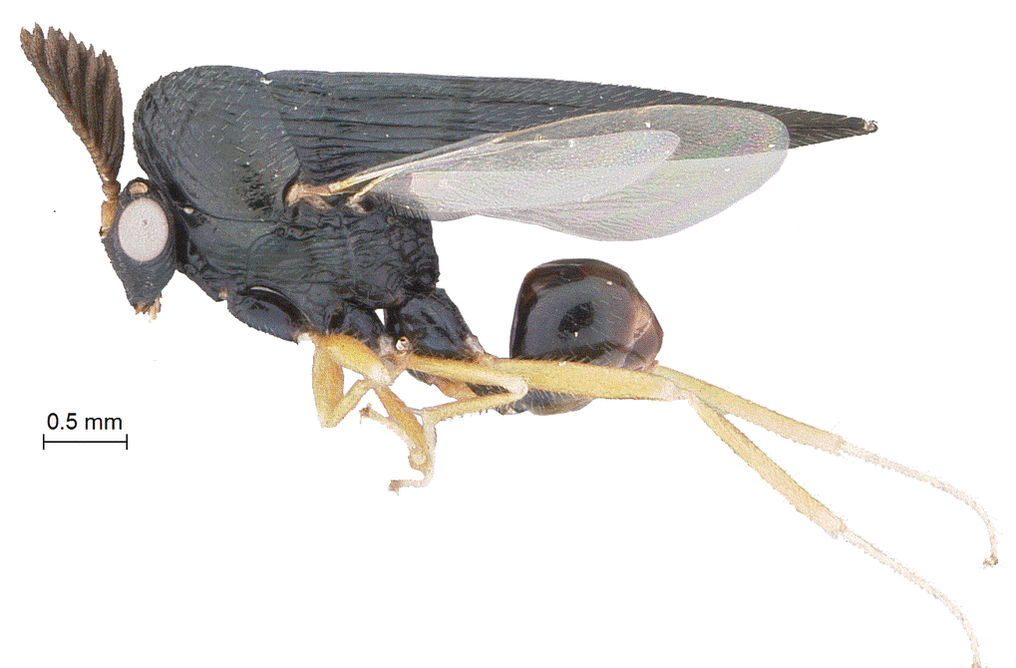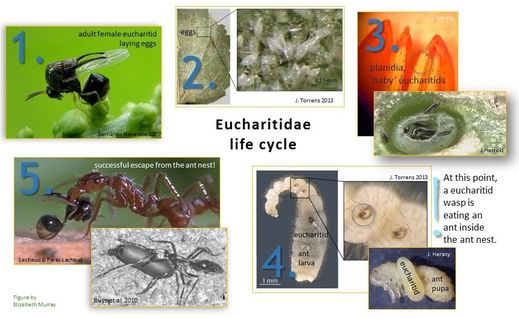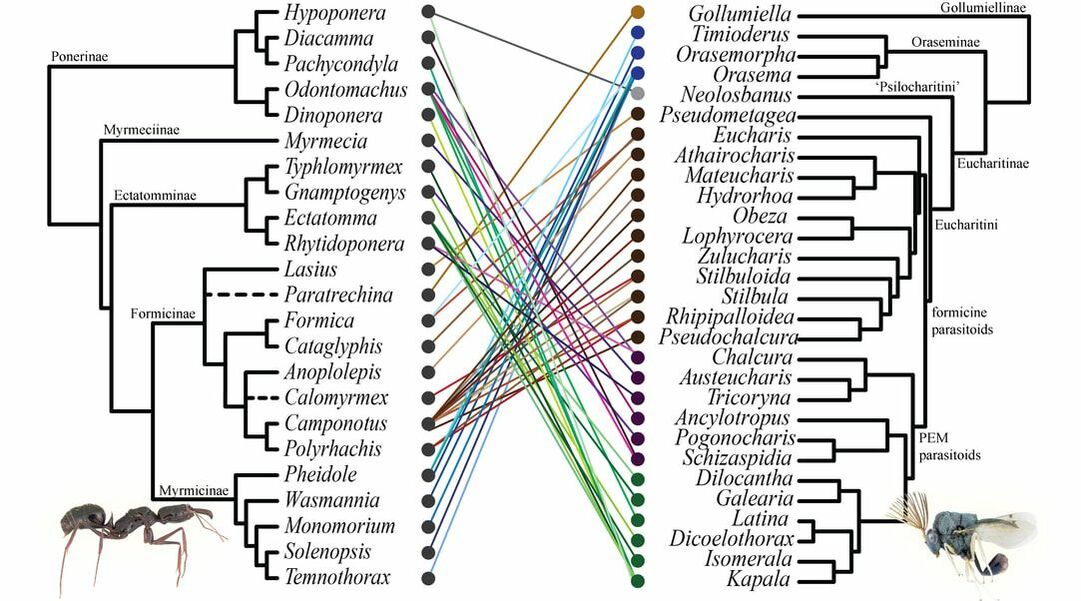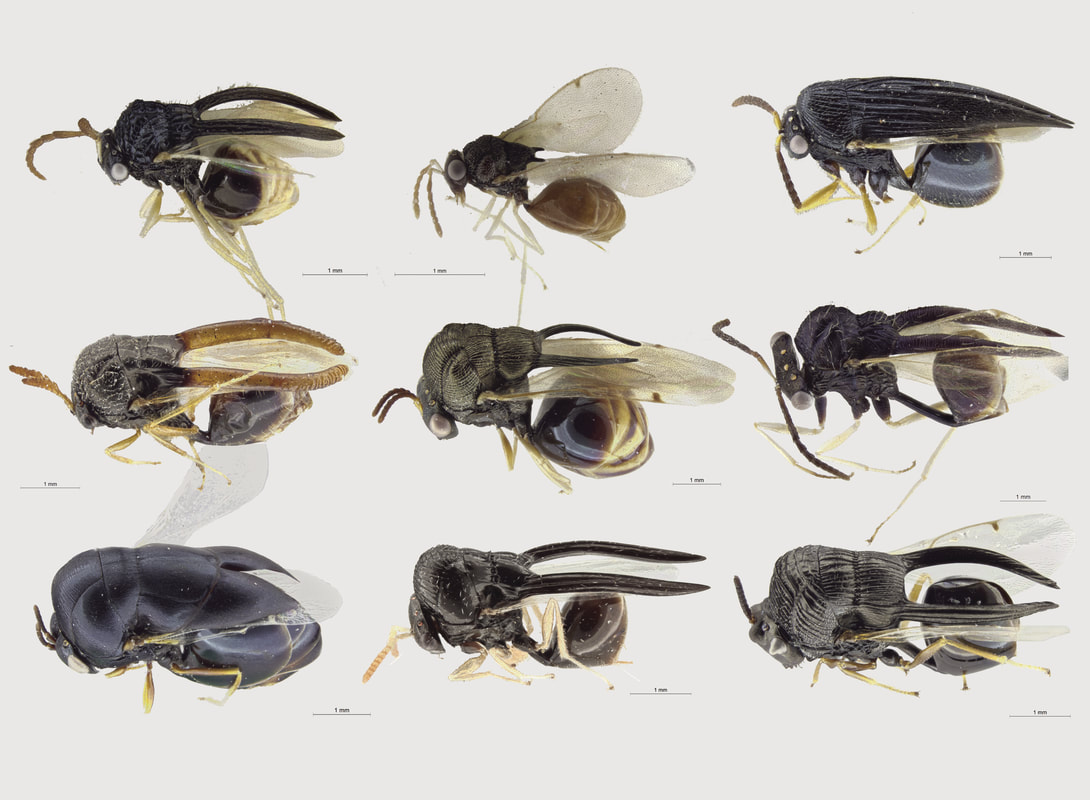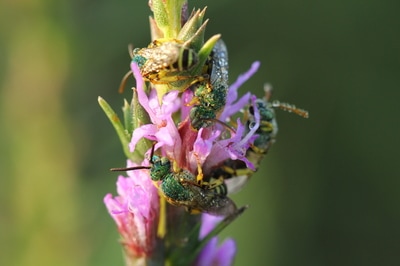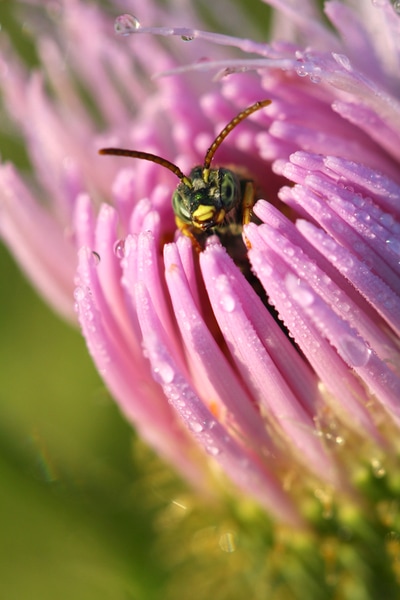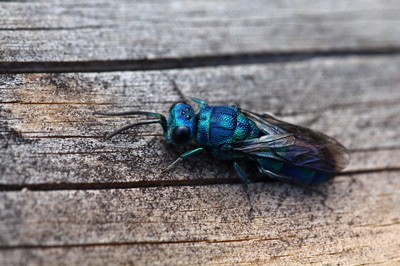|
Eucharitidae (Hymenoptera: Chalcidoidea) is group of wasps unique as the only insect family comprised solely of ant parasitoids. Parasitoids consume a single host, eventually killing it. The larval eucharitids eat the immature ants. Some eucharitids (genus Orasema) attack pestiferous ants such as the fire ant (Solenopsis invicta) and the little fire ant (Wasmannia auropunctata).
Eucharitids are found almost worldwide. There are currently over 500 species described. Particular groups of eucharitids are parasitoids of specific groups of ants -- typically exhibiting host specificity at the level of ant subfamily. |
For my PhD, I used molecular (DNA) data to estimate the age and evolutionary relationships of Eucharitidae, with a focus on the New World Kapala clade, a group of 14 genera. There are a few rare genera of New World eucharitids that I could incorporate into phylogenetic analyses only by way of coding morphological characters using museum specimens, but otherwise I used a dataset of five genes for the majority of analyses. I also explored aspects of the ant host associations, historical biogeography, and lineage diversification of the eucharitids.
|
Host-parasitoid taxonomic associations, from Murray et al. 2013, supplementary Fig 2. Tanglegram of 29 eucharitid genera and 23 ant genera. Only genera with parasitoid-host associations are included. Patterns of host use emerge at subfamily level and below. Although there is not a strict 'co-phylogeny', we found that a clade of eucharitids generally all parasitize the same types of ants, even across the world!
Formicidae cladogram on left adapted from Moreau et al. 2006, ant image from antweb.org. Paratrechina and Calomyrmex placement estimated (dashed lines) because terminals were not included in original phylogeny. |
Main Findings:
- Eucharitidae originated after their ant hosts. Though the eucharitids are not a 'young' group, at >72 million years old, ants are likely >125 million years old.
- Across the eucharitid family, there were several (probably 5) dispersal events from the Old World to the New World (North/Central/South America), all estimated to have occurred in the past 35 million years.
What next?
There are many evolutionary questions to pursue in this group. I'm still interested in working on euchartids, and in Nov. 2019, I had a paper accepted: "Neotropical ant parasitoids (Hymenoptera: Eucharitidae): interpreting taxonomy, phylogeny, and divergent morphologies" which focuses on the Kapala Clade (13 described genera & another undescribed genus). [now published: free PDF]
There are many evolutionary questions to pursue in this group. I'm still interested in working on euchartids, and in Nov. 2019, I had a paper accepted: "Neotropical ant parasitoids (Hymenoptera: Eucharitidae): interpreting taxonomy, phylogeny, and divergent morphologies" which focuses on the Kapala Clade (13 described genera & another undescribed genus). [now published: free PDF]
selected references:
Heraty, J.M. (2002) A revision of the genera of Eucharitidae (Hymenoptera: Chalcidoidea) of the world. Memoirs of the American Entomological Institute, 68, 1-359.
Heraty, J.M., et al, incl. Murray, E. (2013) A phylogenetic analysis of the megadiverse Chalcidoidea (Hymenoptera). Cladistics, 29, 466-542.
Murray, E.A. & Heraty, J.M. (2016) Invading Africa: a novel transoceanic dispersal by a New World ant parasitoid. Journal of Biogeography, 43, 1750-1761.
Murray, E.A., Carmichael, A.E. & Heraty, J.M. (2013) Ancient host shifts followed by host conservatism in a group of ant parasitoids. Proc Roy Soc, B, 280, 20130495. [pdf]
also: John Heraty has a website with a list and PDFs of 100+ eucharitid publications here.
The image at top is a male Thoracantha, a genus from the Kapala clade. This species is from South America.
Heraty, J.M. (2002) A revision of the genera of Eucharitidae (Hymenoptera: Chalcidoidea) of the world. Memoirs of the American Entomological Institute, 68, 1-359.
Heraty, J.M., et al, incl. Murray, E. (2013) A phylogenetic analysis of the megadiverse Chalcidoidea (Hymenoptera). Cladistics, 29, 466-542.
Murray, E.A. & Heraty, J.M. (2016) Invading Africa: a novel transoceanic dispersal by a New World ant parasitoid. Journal of Biogeography, 43, 1750-1761.
Murray, E.A., Carmichael, A.E. & Heraty, J.M. (2013) Ancient host shifts followed by host conservatism in a group of ant parasitoids. Proc Roy Soc, B, 280, 20130495. [pdf]
also: John Heraty has a website with a list and PDFs of 100+ eucharitid publications here.
The image at top is a male Thoracantha, a genus from the Kapala clade. This species is from South America.
Images copyright Andrew Murray (my brother). Solitary bees & a cuckoo wasp.
